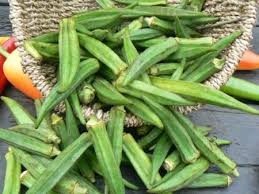HIBISCUS OKRA karkadé purau
Hibiscus rosa sinensis
Hibiscus esculentus
Hibiscus sabdariffa
HIBISCUS TILLIACEUS
MALVACEAE

Hibiscus plants are herbaceous, shrubby, small shrubs or real trees, mainly tropics and subtropics.
They are related to purple, marshmallow, hollyhock temperate zones; cotton and rosewood Oceania.
The flower usually quite large, with 5 petals and twisted prebloom is often very decorative.
The pink hibiscus china is pan tropical flower is the hot regions par excellence, red, pink, yellow, orange and even white with many horticultural varieties;
dark green foliage is dense and allows for hedges in gardens and roadside.
Okra or okra (H. esculentus) is grown for its green fruit eaten as green beans, and seeds.
The karkadé or red sorrel Guinea, from Africa, is cultivated for its persistent calyx red and fleshy (crassulescent).
The purau or burau (H.tilliaceus) is spontaneous in Polynesia and in general in the South Pacific, is a tree with multiple uses.
COMPOSITION AND CHEMICAL PROPERTIES
The hibiscus all contain mucilage (see glossary), especially the flowers, leaves and roots branched polysaccharides which have a structural relationship with pectic polysaccharides: rhamnogalacturonic chain with branches by uronic acids and galactose.
The flower of hibiscus pink China is strongly colored in red by anthocyanosides (see glossary).
The dried fruit of okra or okra contains seeds that contain 20% edible oil and the green fruit, very rich in mucilage, 30mg/100g contains vitamin C and 30 microg/100g vitamin A.
Found in the calyces red karkadé of acidic polysaccharides and many phenolic compounds, 15 to 30% organic acids (citric, malic, tartaric) and anthocyanidols.
A team of researchers from Sudan, where the plant originated and where it is cultivated, studied the effects of aqueous extracts, revealing:
* Oestrogenic (see glossary) rats (500 mg / kg of extract unpurified corresponds to 2 / 3 of the activity of estradiol 2 mg / kg)
* Spasmolytic and complex muscle relaxation of certain muscles (trachea, aorta, diaphragm), contraction of other muscle groups (bipolar action on the uterus).
We can bring this work to those Indian scholars who have highlighted in the Hibiscus rosa sinensis properties antifertilisantes and abortion (effect on the uterine muscle?) Associated with secondary hormonal activity.
USES
The hibiscus flower (especially the variety with double corolla red) and the flower purau when she falls off the tree (when the color changes from lemon yellow to red), are rich in mucilage and thus possess emollient (see glossary), softening very interesting.
They are used in inflammatory conditions internal and external abscesses, tonsillitis, stomatitis, bronchitis and also digestive disorders and hemorrhoids.
They are applied:
* Fresh or slightly better boiled in poultices, (abscess, pruritic skin disorders, cracks, insect bites)
* Decoction (see glossary), sitz baths, for anorectal disorders,
* Infusion and gargle, sore throat, stomatitis,
* Infusion or decoction filtered and sweet: bronchitis, irritating cough, and dysenteric disorders, spastic colitis.
The green fruit of okra, a bit overcooked and slightly crushed, boiled gives a sticky mucilaginous well known in the West Indies to ease gastrointestinal disorders secondary to alcohol abuse; slightly laxative effect is mitigated by the properties antispasmodics.
With the calyxes of karkadé are prepared jams, jellies and a "health tea" known in many tropical countries and later became a classic country of origin (roselle drink or sorel the British West Indies) and even in Europe. The Creoles in advising the lung and also as an anti-asthenia (see glossary) and work up an appetite.
The infusion of karkadé hypotensive and is deemed "cool" and can be considered angioprotectrice its content anthocyanosidols. The spasmolytic and estrogenic effects are not yet utilized in Western medicine.
In Tahiti, using not only flowers but also the stipules, the tips of young roots, bark of young branches and parenchyma Liberian purau. The flowers are used as an emollient, other parts are combined with other plants in complex compositions.
0 commentaires